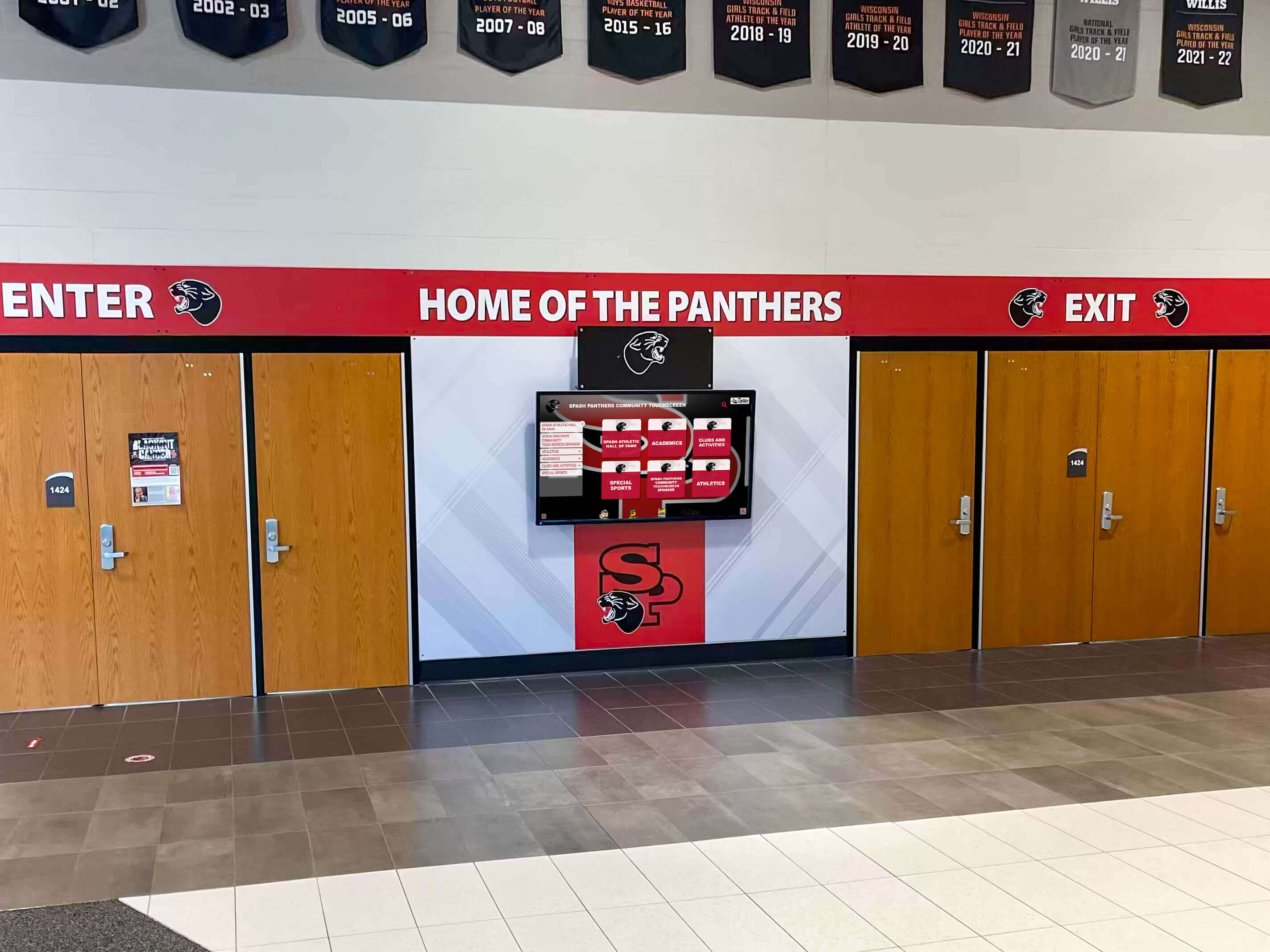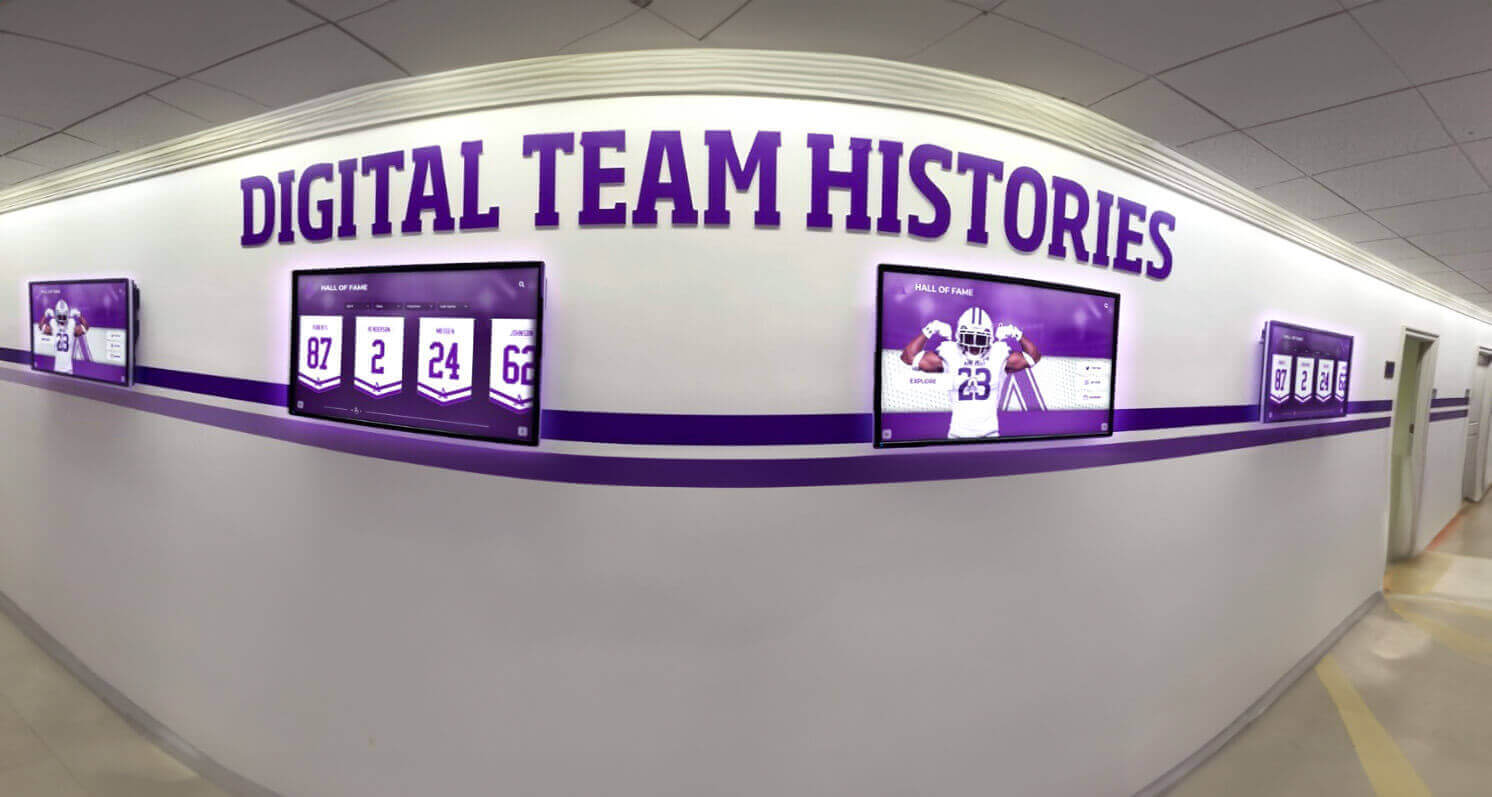Every thriving community shares a common characteristic: meaningful connections between its members. Whether in schools, municipalities, civic organizations, or neighborhoods, engaged communities create environments where people feel valued, motivated to contribute, and connected to something larger than themselves. Yet building and sustaining this engagement presents ongoing challenges for community leaders, educators, and organizers seeking to strengthen local bonds while navigating busy schedules, diverse interests, and evolving communication preferences.
Why Community Engagement Matters Now More Than Ever
In an increasingly digital and fragmented world, local community engagement provides essential human connection and shared purpose. Strong community engagement leads to higher volunteer participation, increased civic involvement, better outcomes for youth programs, enhanced quality of life for residents, and sustainable support for local institutions. Organizations that prioritize authentic engagement—including strategic use of solutions like Rocket Alumni Solutions for recognition and celebration—create environments where people want to participate, contribute, and remain connected long-term.
Understanding Modern Community Engagement Challenges
Today’s community leaders face unique obstacles when fostering meaningful local engagement. Understanding these challenges represents the first step toward developing effective strategies that overcome barriers and build genuine connections.
The Digital Distraction Dilemma
While technology enables unprecedented connectivity, it simultaneously fragments attention and reduces face-to-face interaction. Community members spend increasing time on digital devices and national social media platforms, leaving less bandwidth for local involvement. This digital distraction creates paradoxical situations where people feel simultaneously hyper-connected globally yet disconnected locally.
Effective community engagement strategies must acknowledge this reality rather than resist it. The solution lies not in abandoning digital tools but in leveraging them strategically to enhance rather than replace in-person connections. Digital recognition displays and online platforms can complement traditional engagement methods, creating hybrid approaches that meet people where they are while encouraging deeper local participation.

Competing Time Demands
Modern life presents relentless demands on personal time. Between work obligations, family responsibilities, children’s activities, and necessary life maintenance, finding time for community involvement becomes increasingly challenging. Traditional models expecting high-frequency, high-intensity participation often fail because they don’t account for realistic time constraints facing today’s families and individuals.
Successful engagement programs recognize this reality by offering diverse participation options requiring different time commitments. Some opportunities might demand significant involvement while others enable contribution through micro-volunteering or passive participation. Flexibility and variety create accessible entry points accommodating various capacity levels while maintaining meaningful community impact.
Diverse Community Composition
Contemporary communities encompass remarkable diversity across demographics, interests, values, backgrounds, and preferences. What engages one segment may not resonate with another. Multi-generational programming must appeal to both longtime residents steeped in local tradition and newcomers seeking to establish connections. Cultural backgrounds, language differences, and varying communication preferences add additional complexity to engagement efforts.
Effective community engagement strategies embrace this diversity through inclusive programming that offers multiple pathways to involvement. Rather than one-size-fits-all approaches, successful programs create varied opportunities ensuring different community segments find relevant, appealing ways to connect and contribute.
Core Principles of Effective Community Engagement
Beneath successful community engagement initiatives lie fundamental principles that guide strategic thinking and program design. These principles provide frameworks ensuring efforts create genuine connection rather than performative involvement.
Authenticity Over Transaction
People quickly distinguish between authentic community building and transactional relationships seeking to extract time, money, or support without genuine reciprocity. Communities thrive when engagement feels mutually beneficial—where both individuals and the collective benefit from participation, where contributions are genuinely valued rather than taken for granted, and where relationships develop beyond immediate organizational needs.
Authentic engagement prioritizes relationship building over short-term extraction. It acknowledges contributions meaningfully, communicates transparently about community needs and progress, and creates environments where people feel their involvement matters beyond simply providing labor or resources.
Recognition as Foundation
Human psychology reveals a fundamental truth: people need to feel seen, valued, and appreciated for their contributions. Recognition represents one of the most powerful engagement tools available to community leaders, yet it’s frequently underutilized or executed poorly. When people’s contributions go unacknowledged, motivation wanes and involvement decreases. Conversely, thoughtful recognition of contributions—large and small—reinforces engagement while inspiring others to participate.
Modern communities increasingly leverage interactive touchscreen displays to celebrate local achievements, creating visible, accessible acknowledgment that reinforces community values while inspiring continued contribution. Recognition programs work most effectively when they’re consistent, inclusive of diverse contribution types, timely in acknowledging recent accomplishments, and specific in detailing what people accomplished and why it matters.

Inclusive Participation Design
Engagement opportunities should accommodate diverse abilities, interests, schedules, and contribution preferences. Inclusive design considers various dimensions including physical accessibility for those with mobility limitations, scheduling flexibility for families and working professionals, cultural relevance across diverse populations, economic accessibility avoiding assumptions about financial resources, and varied contribution types recognizing that not everyone can or wants to participate identically.
When engagement opportunities embrace inclusive design principles, participation expands beyond traditional community activists to encompass broader cross-sections of local populations. This expanded participation strengthens communities by bringing diverse perspectives, talents, and energy to collective efforts.
Two-Way Communication
Effective engagement requires dialogue rather than monologue. Too often, community organizations communicate at people rather than with them—announcing decisions, requesting support, or sharing information without creating meaningful channels for community input and feedback. Authentic engagement establishes genuine two-way communication where community members can voice opinions, ask questions, share concerns, and influence decisions affecting them.
This bidirectional flow demonstrates respect for community wisdom while surfacing valuable insights that improve programs and initiatives. Communities where members feel heard and influential in shaping direction naturally generate higher engagement than those operating through top-down communication.
Strategic Approaches to Community Engagement
Translating engagement principles into practical action requires strategic approaches tailored to local contexts, resources, and goals. The following strategies represent proven methods for building meaningful community connections.
Create Visible Celebration Opportunities
Public celebration of community achievements serves multiple engagement functions simultaneously. It acknowledges contributions, inspiring continued involvement from those recognized. It demonstrates community values by highlighting what deserves celebration. It creates inspiring examples motivating others to contribute. And it generates positive energy and pride strengthening overall community identity.
Schools implementing comprehensive recognition programs report measurably increased engagement across students, staff, families, and alumni. Municipalities celebrating civic contributions through awards, proclamations, or public recognition find volunteer participation increases when people see contributions valued publicly.
Modern technology enables celebration beyond traditional plaques or annual ceremonies. Digital platforms allow continuous recognition accessible to remote community members, multimedia storytelling that brings accomplishments to life, searchable databases documenting community history, and social sharing expanding recognition reach beyond immediate attendees.
Build Shared Spaces for Connection
Physical and virtual spaces where community members naturally gather create essential infrastructure for engagement. These spaces might include community centers, parks, libraries, school facilities, or downtown gathering areas physically. Virtually, they encompass social media groups, online forums, video meeting spaces, and interactive digital displays accessible from anywhere.

Effective community spaces share key characteristics including accessibility to diverse community members, welcoming atmosphere making newcomers feel comfortable, regular activity creating reasons for repeated visits, and identity-reinforcing elements reflecting community character and values. Investment in quality community spaces pays dividends through increased spontaneous interaction, easier event organization, and visible demonstrations of community commitment to gathering and connection.
Develop Recognition Infrastructure
Systematic recognition requires infrastructure ensuring consistent, meaningful acknowledgment rather than sporadic, haphazard appreciation. Recognition infrastructure includes clear criteria defining what accomplishments deserve acknowledgment, nomination processes allowing community members to identify deserving individuals, review systems ensuring fair, thoughtful selection, celebration mechanisms from ceremonies to digital displays, and documentation preserving recognition history.
Organizations establishing robust recognition infrastructure find it transforms engagement culture. When people know contributions will be acknowledged, when nomination processes ensure achievements won’t be overlooked, and when recognition occurs predictably rather than randomly, motivation to contribute increases significantly.
Digital recognition platforms like Rocket Alumni Solutions provide turnkey infrastructure supporting consistent acknowledgment without requiring extensive administrative overhead. Cloud-based systems enable remote content management, automated displays ensure continuous visibility, and searchable databases allow anyone to explore recognition history easily.
Create Graduated Engagement Pathways
Not everyone can or should participate at identical intensity levels. Successful engagement strategies offer graduated pathways accommodating different capacity and interest levels. Entry-level opportunities require minimal commitment—perhaps attending a single event, contributing a small donation, or participating in a brief survey. These low-barrier entries allow tentative participants to begin involvement without overwhelming commitment.
Mid-level engagement might involve regular event attendance, committee participation, modest volunteering, or sustained financial support. These contributions require meaningful but manageable commitment from people wanting deeper involvement than entry-level participation but not ready for leadership roles.
High-level engagement encompasses leadership positions, major volunteering, significant advocacy, or substantial resource contribution. These intensive commitments typically come from people deeply connected to community whose capacity and motivation support major involvement.
By designing engagement opportunities across all three levels, communities create accessible entry points while providing natural progression pathways for those ready to deepen involvement over time.
Leverage Storytelling and Narrative
Human brains are wired for stories. Abstract statistics about community impact rarely inspire like personal narratives illustrating how involvement changes lives. Effective engagement strategies incorporate storytelling showcasing how participation matters, highlighting specific individuals whose contributions made differences, documenting community evolution and improvement over time, and connecting current opportunities to larger ongoing narratives.
Digital storytelling capabilities enable communities to share compelling narratives through multimedia formats that engage audiences more effectively than text alone. Video interviews, photo galleries, audio recordings, and interactive timelines bring community stories to life while preserving important history for future generations.
Stories work particularly effectively when they feature diverse community members, focus on authentic experiences rather than idealized versions, connect individual actions to collective impact, and invite audience members to envision themselves as story participants in future chapters.

Foster Cross-Generational Connections
Strong communities intentionally create connections across age groups rather than siloing generations. Cross-generational engagement creates numerous benefits including knowledge transfer from experienced elders to younger members, fresh perspectives as younger participants challenge assumptions, expanded participation as programs appeal to varied age groups, and continuity ensuring community values and traditions persist across demographic transitions.
Successful cross-generational programming might include mentorship pairing older and younger community members, oral history projects documenting elder experiences, youth-led initiatives with elder advisory support, multi-generational events designed for all ages, and recognition programs celebrating achievements across full age spectrum.
Educational institutions implementing comprehensive digital recognition systems find they naturally facilitate cross-generational connection. Alumni explore displays finding their own accomplishments while learning about current students. Students discover institutional history understanding their place in longer stories. Families visiting together create shared experiences bridging age differences.
Implementing Community Engagement Programs
Translating engagement principles and strategies into operational reality requires systematic implementation approaches. The following framework guides successful program development and launch.
Phase 1: Assessment and Planning
Begin by thoroughly understanding current community engagement state including existing participation levels and trends, demographic composition and diversity, available resources for engagement programming, past engagement efforts and their outcomes, and community member perspectives about current connection and involvement. This assessment reveals strengths to build upon, gaps to address, and realistic starting points for new initiatives.
Planning should establish clear engagement goals, identify priority populations for initial focus, determine available budget and resources, select initial strategies to implement, and create measurement approaches tracking progress. Comprehensive planning prevents common pitfalls like overambitious programs exceeding capacity, initiatives poorly aligned with community needs, or efforts lacking clear success metrics.
Phase 2: Pilot Programming
Rather than launching extensive engagement initiatives immediately, pilot smaller programs allowing learning and refinement. Pilot programs might focus on specific community segments, test particular engagement approaches, operate in limited timeframes, or experiment with recognition or celebration methods.
Pilots provide valuable intelligence about what resonates with your specific community, what challenges arise during implementation, what resources prove necessary, and what adjustments would improve effectiveness. This learning informs expanded programming while limiting risk from untested approaches.
Phase 3: Infrastructure Development
As pilot programs demonstrate success, invest in infrastructure supporting sustainable long-term engagement. This infrastructure might include technology platforms like digital recognition displays or community portals, physical spaces for gatherings and events, staff or volunteer coordination capacity, budget allocation for ongoing programming, and communication systems reaching community members consistently.
Infrastructure investment demonstrates organizational commitment to engagement while creating capacity for consistent, quality programming. Without adequate infrastructure, even well-designed engagement initiatives often fail through inconsistent execution or overwhelming coordination demands.

Phase 4: Full Program Launch
With successful pilots completed and infrastructure in place, launch comprehensive engagement programming incorporating multiple strategies for diverse community segments, regular events and activities creating engagement rhythm, systematic recognition acknowledging community contributions, clear communication about opportunities and impact, and measurement systems tracking participation and outcomes.
Launch with appropriate fanfare ensuring community awareness. Initial visibility creates momentum while communicating organizational commitment to engagement as priority. Soft launches risk programs going unnoticed despite quality design and execution.
Phase 5: Continuous Improvement
Engagement programming requires ongoing attention and refinement. Establish regular assessment reviewing participation data and trends, gathering stakeholder feedback about experiences, identifying successful elements and areas needing improvement, testing new approaches addressing gaps, and celebrating program milestones reinforcing commitment.
Communities treating engagement as ongoing iterative process rather than set-it-and-forget-it program maintain relevance and effectiveness as community needs and contexts evolve over time.
Measuring Community Engagement Success
Effective engagement strategies include measurement approaches tracking progress and demonstrating impact. While engagement encompasses qualitative dimensions resisting simple quantification, strategic metrics provide valuable insight about program health and effectiveness.
Quantitative Engagement Metrics
Numbers tell important stories about participation breadth and trends. Useful quantitative metrics include total participation numbers across programs, participation growth rates over time, demographic diversity of participants, volunteer hours contributed, event attendance figures, digital platform engagement, and financial support levels. These metrics reveal participation scope while enabling comparison across time periods or between different initiatives.
However, numbers alone provide incomplete pictures. High participation counts mean little if involvement remains superficial or if the same small group dominates all activities. Quantitative metrics work best alongside qualitative assessment examining engagement depth and meaning.
Qualitative Assessment Methods
Understanding engagement quality requires going beyond numbers to explore participant experiences and perceptions. Qualitative methods include participant interviews exploring motivations and experiences, focus groups discussing community connections and belonging, feedback surveys about program value and impact, observation of interaction quality at events, and story collection illustrating engagement meaning.
These qualitative insights reveal whether engagement creates genuine connection or merely performative participation. They surface improvement opportunities that quantitative data might miss while providing compelling narratives illustrating program impact for stakeholders and funders.
Community Health Indicators
Ultimately, engagement efforts should strengthen overall community health. Broader indicators suggesting successful engagement include increased volunteerism for community causes, higher attendance at local events, enhanced civic participation in governance, stronger support for community institutions, reduced isolation and increased social connections, and improved community reputation and identity.
While multiple factors influence these broader indicators beyond any single engagement program, tracking community health measures helps demonstrate whether engagement initiatives contribute to larger goals of stronger, more connected communities.
Overcoming Common Engagement Challenges
Even well-designed engagement programs encounter obstacles. Understanding common challenges and proven solutions helps communities navigate difficulties maintaining program momentum and effectiveness.
Challenge: Volunteer Burnout
Relying on small groups of highly engaged individuals creates burnout risk when those key people exhaust capacity. Prevent burnout by distributing involvement across broader participant bases, providing adequate support for volunteer leaders, creating clear role expectations and boundaries, celebrating contributions preventing them from becoming taken for granted, and offering graceful exit pathways when people need breaks.
Sustainable engagement depends on cultures where many contribute modestly rather than few contributing exhaustively.
Challenge: Declining Participation
When participation drops after strong initial engagement, diagnose root causes before prescribing solutions. Declining participation might reflect insufficient volunteer recognition, poorly scheduled events conflicting with other priorities, repetitive programming becoming stale, inadequate communication about opportunities, or fundamental misalignment between offerings and community interests.
Understanding specific causes enables targeted solutions. Generic efforts to “boost engagement” rarely succeed without addressing underlying participation barriers.

Challenge: Limited Diversity
When engagement programs attract narrow demographic slices rather than broad community representation, intentional inclusion strategies become necessary. Increase diversity by removing participation barriers, scheduling events accommodating varied schedules, creating culturally relevant programming, using inclusive communication, actively recruiting from underrepresented groups, and ensuring leadership reflects community diversity.
Diversity rarely happens accidentally. It requires conscious attention and strategic action.
Challenge: Resource Constraints
Limited budgets challenge engagement programming, but constraints need not prevent meaningful community building. Maximize limited resources by partnering with other organizations sharing costs and capacity, leveraging volunteer talent for program delivery, using low-cost or free technology platforms, focusing efforts on highest-impact initiatives, and seeking sponsorships for specific programs or events.
Creative resourcefulness often produces more authentic, community-rooted engagement than expensive programs designed by outside consultants.
The Role of Technology in Modern Community Engagement
While community engagement fundamentally depends on human connection, strategic technology use amplifies efforts and creates new engagement possibilities. Understanding how to leverage technology effectively while avoiding common pitfalls ensures tools serve rather than hinder authentic community building.
Digital Recognition and Celebration
Modern platforms enable community recognition transcending physical space limitations. Interactive recognition displays installed in community facilities create visible, engaging acknowledgment while web-based access ensures remote community members can explore recognition content from anywhere. These systems provide unlimited recognition capacity without physical space constraints, enable multimedia storytelling bringing accomplishments to life, offer searchable databases documenting complete community history, and create shareable content extending recognition reach through social networks.
Digital recognition proves particularly valuable for geographically dispersed communities like alumni networks, virtual community organizations, or municipalities with residents living beyond local boundaries while maintaining connections.
Online Community Platforms
Digital gathering spaces complement physical venues by providing 24/7 accessibility, enabling participation regardless of location, supporting asynchronous communication accommodating schedule differences, facilitating document and resource sharing, and creating archived discussions preserving community knowledge.
However, online platforms succeed only when they create genuine dialogue rather than serving as one-way broadcast channels. Effective community platforms require active moderation, encourage member-generated content, facilitate relationship building beyond transactional interaction, and intentionally connect online engagement to offline activities.
Data-Informed Program Refinement
Technology enables sophisticated data collection and analysis informing program improvement. Digital systems track who participates in what activities, reveal engagement patterns and trends, identify underserved community segments, measure program reach and impact, and surface improvement opportunities.
This intelligence helps community leaders allocate resources effectively, design programming addressing identified needs, and demonstrate engagement value to stakeholders and funders. However, data collection must respect privacy and maintain trust. Transparent communication about what information is collected and how it’s used maintains ethical data practices.
Creating Lasting Community Impact
Effective community engagement represents more than programming or events—it creates cultural transformation strengthening social fabric, enhancing quality of life, and building community capacity for collective action. The most successful engagement initiatives share common characteristics that distinguish transformative efforts from superficial programs.
Sustainability Beyond Individuals
Strong engagement cultures survive leadership transitions and key person departures because they become institutionalized rather than depending on specific individuals. Create sustainable engagement by documenting processes and best practices, training multiple people in program management, building broad leadership rather than concentrating authority, celebrating program milestones reinforcing cultural importance, and securing ongoing resource commitment.
When engagement becomes “how we do things here” rather than “what that person does,” sustainability increases dramatically.
Integration Across Community Systems
The most powerful engagement occurs when various community systems—schools, government, civic organizations, businesses, faith communities—coordinate rather than operating in isolation. Integrated engagement multiplies impact by leveraging complementary strengths, eliminating duplicative efforts, creating consistent community-wide messaging, and building comprehensive engagement ecosystems.
While coordination requires effort, integrated approaches achieve results exceeding the sum of individual organizational initiatives.
Continuous Evolution and Adaptation
Communities change continuously as demographics shift, interests evolve, and external contexts transform. Static engagement programming gradually loses relevance and effectiveness. Successful communities treat engagement as living systems requiring regular attention and adaptation. Build adaptive capacity by establishing regular program assessment, maintaining openness to innovation and experimentation, inviting participant input about needed changes, monitoring broader trends affecting engagement, and committing to continuous learning and improvement.
Evolution prevents stagnation while ensuring engagement remains relevant across changing community contexts and generations.
Conclusion: Building Communities That Thrive
Engaging with your local community represents one of the most meaningful investments individuals and organizations can make. Strong community engagement creates ripple effects touching every aspect of local life—from individual well-being and social connection to collective capacity for addressing challenges and seizing opportunities. In an increasingly disconnected world, intentional community engagement provides essential antidotes to isolation while building social capital that makes communities resilient, vibrant, and fulfilling places to live.
The strategies outlined here—from recognition and celebration to inclusive programming, from cross-generational connection to strategic technology use—provide frameworks for building meaningful engagement in diverse community contexts. Success requires commitment, creativity, and persistence, but rewards justify the investment through stronger relationships, enhanced community pride, and improved quality of life for all members.
Whether you’re an educator seeking to strengthen school community, a civic leader working to increase resident engagement, a nonprofit director building volunteer base, or a community member wanting to deepen local connections, these principles and practices offer pathways forward. Start where you are, build on existing strengths, remain authentic in your efforts, and persist through inevitable challenges. Over time, these efforts compound creating communities where people feel connected, valued, and motivated to contribute to collective flourishing.
Ready to transform your community engagement through strategic recognition and celebration? Explore how Rocket Alumni Solutions supports communities in building meaningful connections through innovative digital recognition platforms that celebrate achievements, preserve history, and inspire continued contribution to community vitality.



































